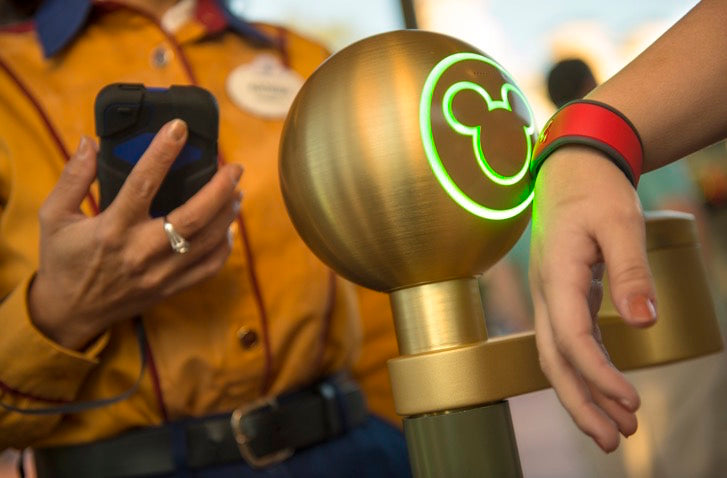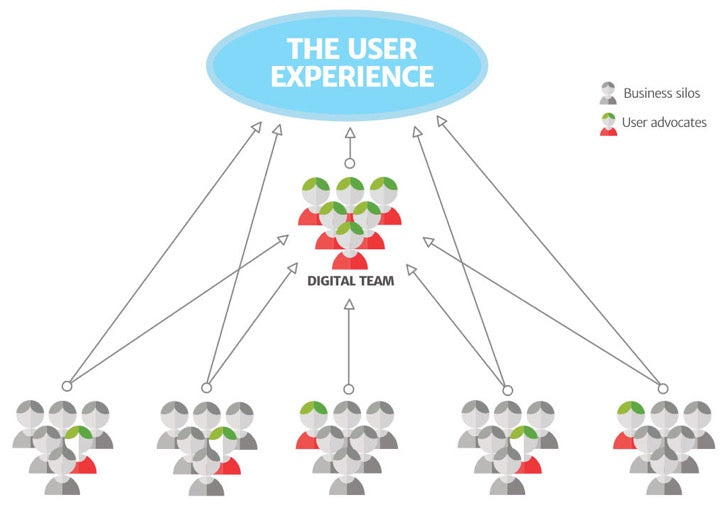I am a user experience designer.
But many people wouldn’t recognize me as one. I don’t often use Photoshop, Sketch, or any other graphics package. You will rarely find me designing hero banners or carousels. I don’t even find myself wireframing much these days. Even so, I do design the experiences of users.
I don’t sound much like a designer, do I? But then I think we have a narrow view of what a designer is and an even narrower view of user experience.
User experience is more than a single user interface
Can I let you in on one of my pet peeves? It’s job descriptions for UX/UI designers. My problem with these job descriptions is that they position user experience design and user interface design as the same thing. They are not.
For a start, it’s not just the user interface designer who influences the user experience. That trivialises the impact developers, copywriters, and others have on the interfaces we build. But more important than that is the fact that the user’s experience isn’t constrained by any single interface.
More than ever, users are moving between platforms and devices. That might be moving from a mobile device to a laptop, or from a social media platform to a website — all while dealing with a single organisation. This complex web of platforms and devices work together to shape the user’s experience. No single user interface encapsulates the entire user experience. As we will explore later in the post, user experience has many facets, starting at initial brand recognition and going all the way through to long-term customer support.
We are also just beginning to see a decline in user interfaces as the primary point of user interaction, at the same time as a new type of user experience is emerging — one that is built around sensors and intelligent software. This has enabled experiences such as those provided by Disney’s Magic band or apps like Move, which rarely need to be even launched.

If you are going to call yourself a user experience designer, you need to delve deeper than the pixels.
But even today, much of the user’s experience has nothing to do with the user interface. That is why, if you are going to call yourself a user experience designer, you need to delve deeper than the pixels.
You might also like: 10 Things I Learned About UX By Being Drunk
Going deeper with user experience
One of the most important principles to understand about user experience design is that it does not stop at the edge of the screen. All kinds of things influence the user’s experience that have nothing to do with pixels or user interfaces.
For a start, there is all the work carried out by marketers, which has a profound impact on how people perceive a brand or organization. This perception influences how users judge the experience they receive. For example, if a marketing campaign positions a brand as a budget option, users are more tolerant of a poor experience. Marketing frames our expectations.
And it’s not just marketing that influences the user experience. Almost every part of a brand has an impact — whether it be how the customer service team fields calls or how finance charges users.
Even non-customer facing departments have an effect. We have all endured terms of service produced by a legal team. That, or got frustrated by a lack of information about the dispatch of a product by a fulfilment team.
Getting these teams to put the user at the heart of their process can be an enormous challenge. This is especially true if they are not customer facing. Even if the management is user centric, translating that into day-to-day operations is difficult.
For a start, the organisational structure often gets in the way. Most organisations work in silos. But, as we have seen, creating a great user experience involves working across silos.
Then there are those standard operating procedures and other forms of governance — processes that made sense in the past but have become a barrier in the light of changes digital has brought. These need to be challenged and replaced with something more relevant.
Finally, there are the unwritten rules of how an organisation operates; the cultural norms that are often not user friendly. When seeking to improve the experience of users, it is common to encounter objections. Objections that are nothing more than, “That is not how we do things here.”
All of these shape the user experience. Tackling these issues is what user experience design is really about, yet it is not how many perceive it — including designers.
You might also like: 8 Things My Mom Taught Me About UX
How we can redefine user experience design
It is time for us to redefine what it means to design a user’s experience. That starts with us redefining what design is. Too often we see design as pushing pixels and making interfaces. But as we all know, good design is about so much more. Sometimes an interface is the right answer; sometimes a sensor. But more often than not, it is establishing a new process or forming a new team.
At the heart of good user experience design is collaboration.
At the heart of good user experience design is collaboration. As designers, it is our job to bring colleagues together to create better experiences. We cannot do it by opening Photoshop alone. We cannot even do it with a developer or copywriter at our side.
True collaboration means working with people outside of our normal digital teams. Marketers, customer support staff, and even people in legal or finance. The truth is that creating a user experience means we have to work with almost everybody across our organisations.

But to create that kind of collaborative atmosphere, we need to become educators. We need to educate our colleagues and management about the value of creating a great user experience. We need to educate them about how, together, we need to address issues such as:
- Inconsistencies in your organisational tone of voice
- Users having to reenter data as they are forced to deal with different systems
- Users having to repeat themselves when dealing with different departments
- Inconsistent level of service across different channels and departments
- Contradiction in the information provided by different business silos
- Users falling between the gaps of different organisational processes or policies
The list could (and should) go on. Only then can we start to challenge the culture, policies, and company structures that are barriers to success.
I was once speaking to Leisa Reichelt about her job as lead user researcher at the Government Digital Service here in the UK. I asked her what exactly her job involved. She said she only spent 30% of her time doing user research, and the other 70% communicating that research to her colleagues.
We think our job as designers is to ‘design’ interfaces. But I believe that is only a small part of it. Our focus should be on educating colleagues and management; educating them about the need to create great experiences and how to achieve that.
Here’s what I propose. We need to:
- Start arranging user experience meet-ups and presentations within our organisations to promote best practices
- Publish newsletters internally showcasing better ways of working
- Build prototypes demonstrating how things could be better
- Invite colleagues to see the consequences of poor user experience in usability sessions
- Share testimonials from frustrated customers
-
Produce infographics highlighting analytics on user experience
There are no shortage of ways to educate if we have the will to pursue them. But before we can do that, we need to broaden our own view of design and recognise the need for collaboration with all our colleagues — not just those we consider user experience professionals
Read more
- Add Products Faster With Product CSVs
- Content Strategy: The Principles we Followed to Build the New Shopify App CLI
- How to Use Eye Tracking in Usability Tests
- 5 Common Digital Content Problems and How to Avoid Them
- 5 Killer Web Design Trends to Watch in 2016
- The Key Aspects to Consider When Building Multilingual Websites
- How To Harness The Power of Process Mapping
- Shopify's Mobile Device Testing Lab Gets Wheels
- Agile Design: An Introduction
You might also like: The Seven Deadly Sins of User Experience Design

